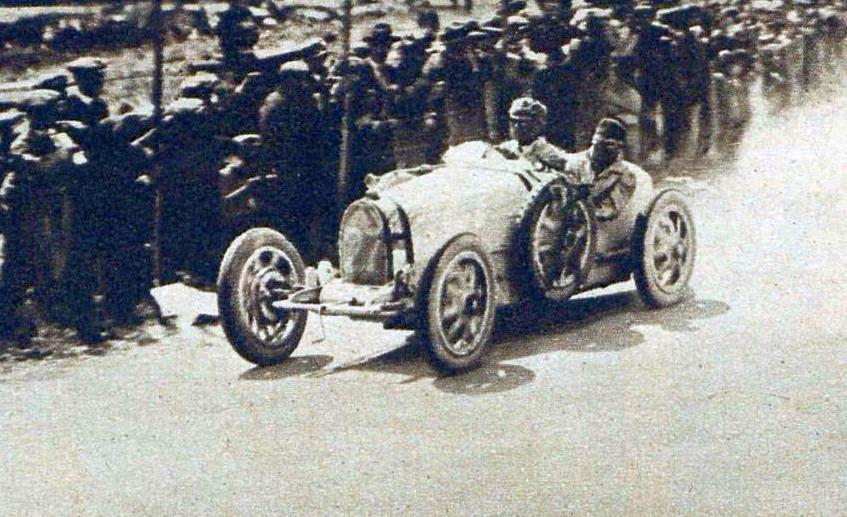
1926 Targa Florio
The 17th running of the Targa Florio occurred in 1926 at the Medio Circuito Madonie in Palermo, Sicily. A considerable grid of 34 cars entered, with two races running simultaneously: the Coppa, only open to factory teams, and the Targa, which was also open to independent drivers. Bugatti, Maserati, Delage, Alfa Romeo and Peugeot were all present for the Coppa Florio, whilst various privateers entered in racing machines from Itala, Officine Meccanique, Steyr, Ceirano, and Diatto. Competitors were divided into four classes based on engine capacity. Class I featured up to 1100cc cyclecars, Class II was for cars up to 1500cc, Class III up to 2000cc, and Class IV for cars over 2000cc.

The Circuit
The race consisted of five laps around the Medio Circuito Madonie, totalling 540 km (nearly 320 miles) through the mountainous Madonie region of Sicily. It included approximately 1400 corners per lap, making the Targa Florio a race of over 7000 corners. A narrow circuit with steep gradients, it was a true measure of both driver and machine. The start and finish took place near the Cerda train station just a few metres above sea level, with the opening stages leading uphill to Cerda village before twisting uphill to Caltavuturo at 640 metres. From this village, the tight, twisting roads wound along the Madonie Mountains and turned back past a depot to refuel and change tires in the town of Polizzi, 917 meters above sea level. Tortuous hairpin bends followed next, snaking downhill through the mountain village of Collesano at 500 meters and then on to Campofelice, just 50 meters above sea level. From there, it was a 7 km (4.35 miles) fast coastal straight where it was possible to use top gear and pass other cars, before finally the circuit turned inland towards the start/finish near the train station.

The Race
The morning was cloudy, cool and windy with occasional sunshine and mass crowds gathered at the best viewpoints to watch events unfold. It quickly emerged the main contest was between the Bugatti racers Jules Goux, Ferdinando Minoia and Meo Costantini, all driving Type 35Ts. Ultimately, Costantini, the previous year’s winner, dominated, taking the lead from the first lap and never dropping the pace. He finished over ten minutes ahead of second-placed Minoia, who drove to a mostly unchallenged second place. Goux sealed a Bugatti 1-2-3, despite a poor start, amid much competition from Emilio Materassi in a privateer Itala, eventually overtaking him on lap four.
Costantini was victorious in a new record time of 7h 20m 45s, averaging 73.511 km/h along the twisting mountainous roads of Sicily, setting the fastest lap of the race of 1 hour and 26 minutes on his final attempt, averaging 46.8 mph 75.3 km/h. The Italian racer’s achievements were sadly overshadowed by the death of race-favourite and two-time winner Count Giulio Masetti who overturned his Delage 2LCV on the opening lap. Only eighteen cars would reach the chequered flag as a result of crashes and mechanical mishaps, including six in the 1100 cc class who only completed three laps.

The Winner - Bartolomeo "Meo" Costantini
Meo Costantini was a trusted friend of company founder Ettore Bugatti, and the longstanding head of the factory team. Costantini took part in races himself and represents the most successful era in Bugatti’s racing history. On two occasions, he won what was then the most famous and important circuit race in the world, the Targa Florio in Sicily, in a Bugatti Type 35.
Bugatti Type 35T
Quite simply the most successful racing Bugatti of all time, the Bugatti Type 35 took the Grand Prix World Championship in 1926 after winning 351 races and setting 47 records in 1924 and 1925. The Type 35 proved to be particularly handy at the Targa Florio, winning the Sicilian race for five consecutive years from 1925 to 1929. The Type 35 was still so relevant in 1929 that William Grover-Williams drove one to victory in the first Monaco Grand Prix. This feat was to be repeated in 1930 by René Dreyfus. Models of the Type 35, as driven to victory by Meo Costantini at the 1926 Targa Florio, are available to order now at 1:8 scale.


